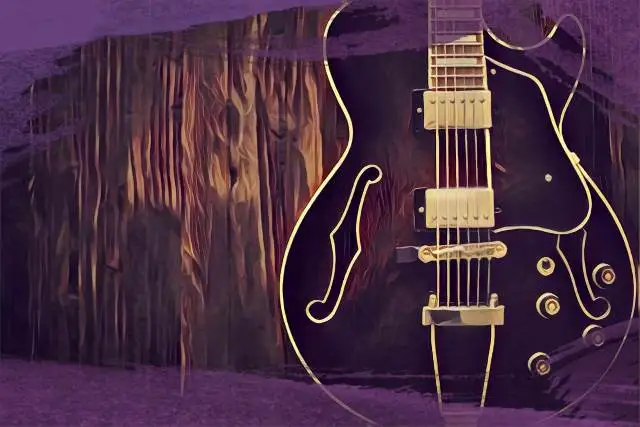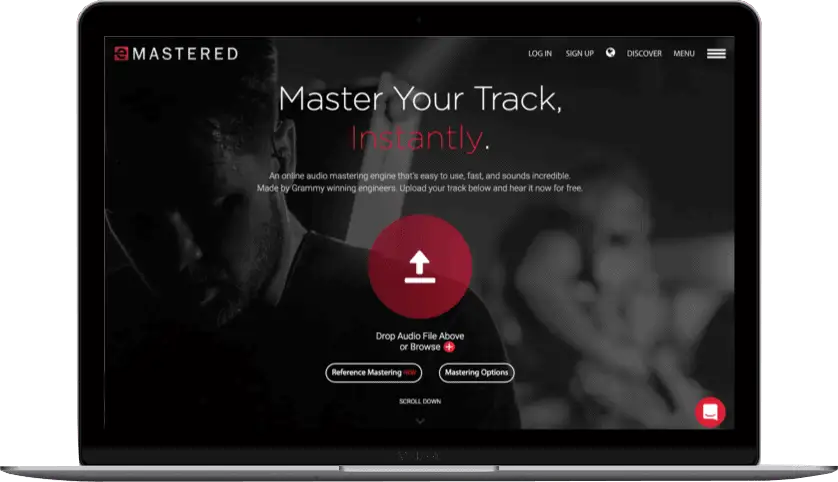Learning a musical instrument is hands down one of the most rewarding things you can do. It's like unlocking a whole new part of yourself, where you not only get to express what’s going on in your mind but also communicate it in a way that words just can’t. There's something really special about the moment when you realize you're actually making music , whether it’s playing your first chord or nailing that riff you’ve been working on.
And while the end goal might be to jam out or create something unique, the journey itself becomes just as exciting.
However, if you start off with an instrument that’s too complicated, it’s easy to get discouraged. Choosing one that matches your skill level (or lack thereof) makes the process a lot more enjoyable, and honestly, it gives you the motivation to keep going. Sometimes, the easier the start, the faster you get hooked, and before you know it, you're progressing without even realizing how far you've come.
In this article, I’ll walk you through 9 musical instruments that are relatively easy to pick up, especially if you’re just starting out.
How to Decide Which Instrument to Learn
Committing to learning an instrument is a big deal, so it’s worth thinking about what’s going to make the whole experience enjoyable for you. There are a few key things to keep in mind before you jump in, so let’s break them down.
Goals
What do you actually want to do with this instrument? Are you looking to play your favorite songs around the campfire, join a band, or even produce music in a studio? Your end goal matters because some instruments are better suited for specific musical styles or roles. If you just want to jam casually, something simple, like an ukulele, might be your best bet. But if you’ve got bigger ambitions, you might want an instrument that gives you more versatility, such as a piano or keyboard.
Portability
This one’s for anyone who likes to be on the go. If you plan on playing at a friend’s house, taking your instrument to a gig, or just moving around a lot, portability is key. While a piano sounds great, lugging one around... not so much. So think about whether you need something easy to carry or if it’s going to live in one spot most of the time.
Cost
Not all instruments are created equal when it comes to cost. Some are fairly affordable instruments, while others can be a major investment. Plus, you can't forget about maintenance and extra gear like strings, reeds, or cables. It's always good to know what you're getting into financially so there are no surprises later on.
Personal Interest
At the end of the day, you have to figure out what really excites you. If an instrument catches your attention and makes you want to pick it up, that’s a huge win. Don’t just go for something because it’s “practical." Go for what sparks your interest. You’re way more likely to stick with it that way.
9 Easy Instruments to Learn
1. Ukulele
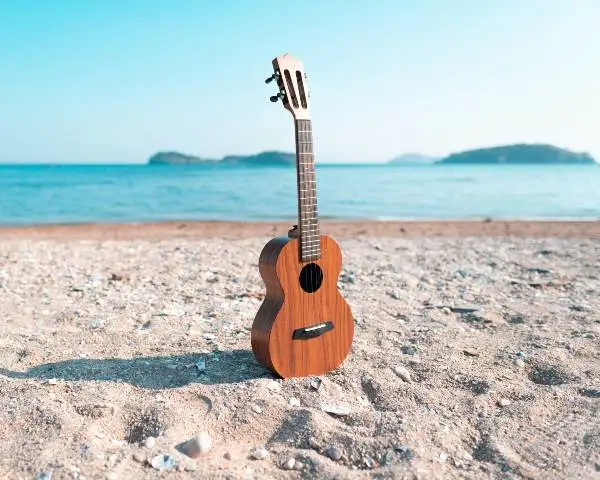
The ukulele is easily one of the most popular musical instruments for beginners. Compared to other string instruments, it’s fun, simple, and pretty forgiving if you’re just starting out. Plus, you don’t have to break the bank to get a decent one. Even affordable ukes can have great sound quality, perfect for anyone who's nervous about investing too much upfront.
Another bonus is that the ukulele is super compact. Whether you’re living in a small apartment or want something you can throw in a backpack and take to the beach, this instrument’s small size is a huge selling point. It's way less bulky than a guitar, so you can literally play it anywhere.
Speaking of guitars, the ukulele shares some similarities. But the big difference is that the frets are closer together, which makes it especially friendly for people with smaller hands or those who find stretching across a guitar neck a bit of a struggle.
And when it comes to learning those chords, the basics are super easy to pick up. With just a handful of simple chords, you can play thousands of songs.
To make things even better, uke tabs are ridiculously easy to find online. There’s a massive community of ukulele players sharing tabs for just about every song you can think of.
2. Recorder

Ah, the sweet, sweet sound of the recorder. It might bring back memories of elementary school music class, where every kid seemed determined to hit the highest, squeakiest note possible. If you’re a parent, you probably still hear the ghostly echo of those “performances” in your living room. But there’s a reason teachers handed these little instruments to children. They’re easy to play and perfect for beginners.
While the recorder may have a bit of a reputation, when played well, it can actually sound beautiful. It’s also simple to get a handle on, which is why it’s so popular in early music education.
One of the recorder’s biggest benefits is how it helps you get a feel for pitch and tempo. If you’re just starting out, it’s a fantastic way to train your ear and get comfortable with basic musical concepts. As for breath control, since the recorder relies on airflow to produce sound, it’s a great way to build up your lung capacity and learn how to control your breathing.
If that wasn't enough, the recorder is an excellent stepping stone if you’ve got your eyes on other woodwind instruments like the flute or clarinet. The finger placement is pretty similar across the board, so once you’ve got the basics down on the recorder, transitioning to one of the bigger woodwinds won’t feel as intimidating.
3. Guitar
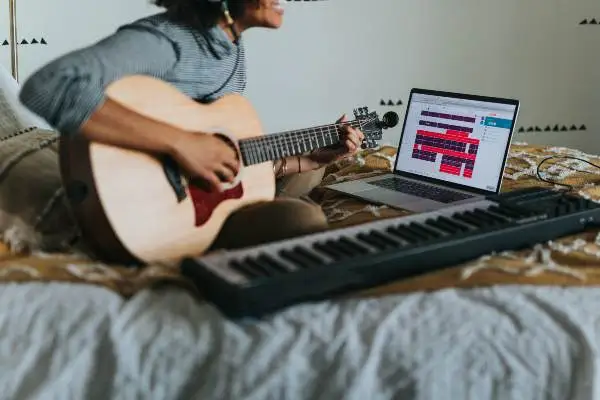
The guitar might be a bit more challenging than some of the other easy instruments to learn on this list, but the good news is that it doesn’t take long to start reaping the rewards. Once you get the hang of basic chords and a few simple strumming patterns, you’ll be surprised at how quickly you can start playing actual songs.
If you’re just starting out, a nylon-string guitar (aka classical guitar) can be a great option because the strings are a bit softer on your fingers. Trust me, as a guitarist of 15 years, when you first start, your fingertips are going to feel it. Over time, you’ll develop calluses that make playing much easier, but nylon strings can give you a gentler introduction.
That being said, they’re not as versatile as steel-string acoustic or electric guitars, which are more common in modern music. So, you’ll want to think about the kind of music you’re interested in. If you’re dreaming of playing rock or pop, a steel-string or electric guitar might be more up your alley.
Another thing to keep in mind is the size of the guitar. If you’re younger, have smaller hands, or just want something more comfortable to hold, you might want to consider a guitar with a smaller body or a shorter scale length. It can make a big difference when it comes to reach and ease of playing, especially when you’re learning those first few chords.
When it comes to learning songs or scales, many students start with tablature (or tabs for short), which is a simplified way of reading music specific to the guitar. Tabs tell you exactly where to place your fingers on the fretboard without having to learn traditional music notation. It’s much easier and quicker to pick up, especially if you’re itching to start playing your favorite songs right away.
4. Bongos
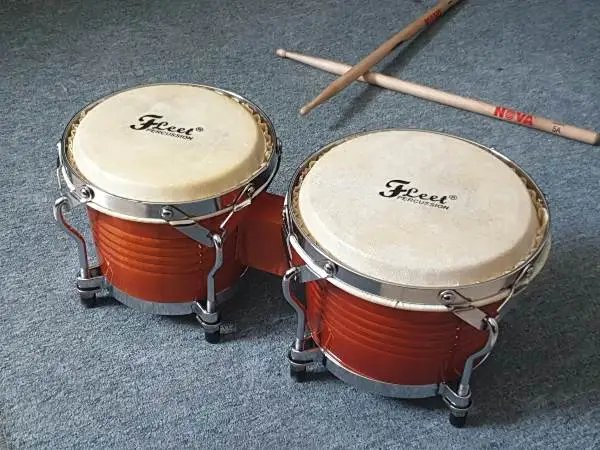
I always recommend bongos to beginners who are interested in learning some auxiliary percussion. They’re super approachable, fun to play, and you don’t need any previous musical experience to get started. While you might picture them in the middle of some hippie drum circle at a music festival or tucked into the background of a Ben Harper-esque acoustic track, bongos are actually way more versatile than you’d think. You can hear them across a ton of musical genres, from Latin and jazz to pop and even rock.
Bongos come as a pair of drums. The smaller, higher-pitched one is called the "macho," and the larger, lower-pitched one is the "hembra." They’re typically played with your hands, and you can use different parts of your hand to create a wide range of sounds. Plus, learning bongos gives you a great foundation for other percussion instruments, like congas or even a full drum kit, since you’re building rhythm and coordination that transfers well to just about any kind of drumming.
5. Keyboard
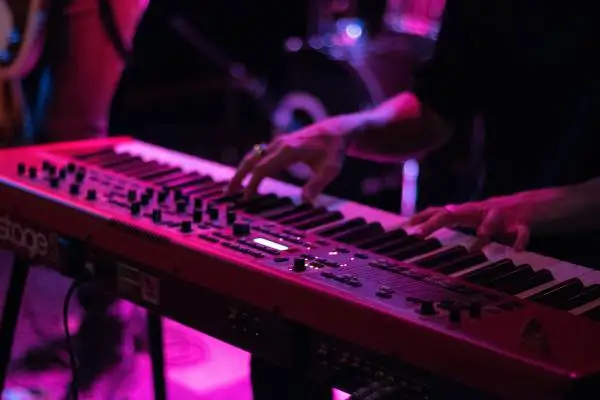
The keyboard is hands down one of the most versatile instruments to learn out there, and if you're interested in learning musical theory, it's probably the best place to start. When you play the keyboard, you gain an understanding of how music is structured. You'll learn how to read sheet music, build chords, create harmonies, and understand the relationship between notes in a way that’s useful for pretty much any instrument you want to pick up later on.
And, like the guitar, the keyboard gives you that satisfying feeling of progress early on. With just a few basic triad chords under your belt, you can start playing along to a wide variety of songs. It’s incredible how quickly you can go from zero to playing full songs with just a little bit of practice.
Plus, mastering the keyboard opens up the door to so much more. Once you’ve got the basics down, transitioning to a full piano is a breeze. Not to mention, it’s a direct gateway to other popular instruments like synthesizers or even digital music production.
6. DJ Controller
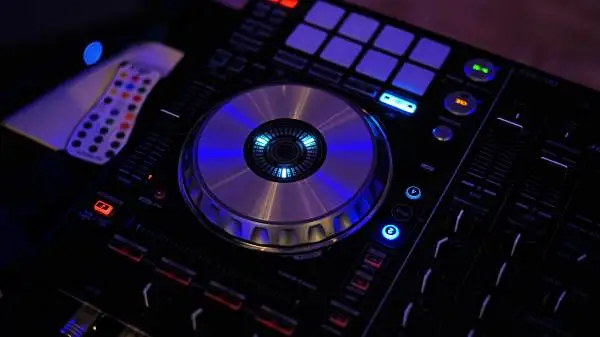
When you think of making your own music, a DJ controller might not pop into your head right away. But trust me, it can be a surprisingly effective tool for picking up musical skills. In fact, there’s actually a lot of music theory baked into the process.
First off, DJ controllers come in all shapes and sizes. You’ve got your basic two-deck setups for beginners, all the way to advanced rigs that let you mix, sample, and manipulate tracks in endless ways. Some controllers are fully digital, working with software like Serato or Rekordbox , while others have more tactile, analog features (buttons, faders, jog wheels) that give you a hands-on feel for the music.
Believe it or not, learning how to mix tracks teaches you a lot about rhythm, tempo, and even pitch. Matching beats across songs requires an ear for timing, while playing with effects and EQ can give you a sense of how different frequencies and tones interact.
And if you’re curious about trying it out, starting with a digital DJ controller is a great move. Gear like the Pioneer DDJ-400 or Numark Mixtrack Pro FX are beginner-friendly options that work with DJ software, giving you access to a ton of features without breaking the bank.
7. Harmonica
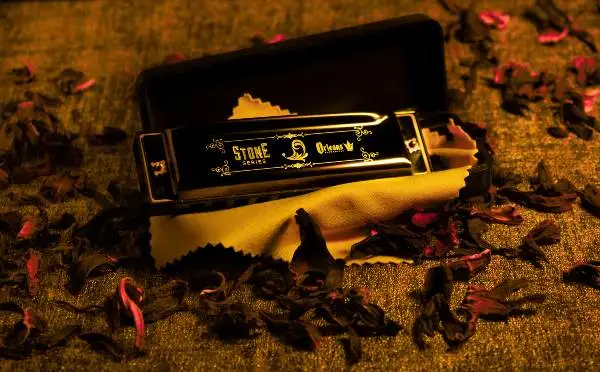
Everyone can picture that old-timey movie scene with a guy sitting in a jail cell, playing a sad blues riff on his harmonica. The instrument has become the soundtrack for someone who’s either waiting for their next meal or contemplating life’s deeper questions. Of course, the harmonica has a lot more going for it than just setting the scene for movie prison breaks!
The harmonica has a strong reputation in blues and country music, sure. But you’ll actually find it sneaking its way into rock, jazz, and even some pop tracks. It’s surprisingly versatile for such a small instrument.
And speaking of small, the harmonica is super compact. You can toss it in your pocket and take it anywhere. No need for roadies or a giant case. You’ll be the most low-maintenance musician in the room, and that’s a win in itself.
The best part? It’s one of the easier instruments to learn. Why? Because you don’t need to worry about complex fingerings or tricky chord shapes right out of the gate. You just blow or draw air through the thing and bam, you’re making music. It’s almost foolproof. With just a few basic techniques, you can get some solid melodies going pretty quickly.
That said, once you’ve got the basics down, there’s a ton of room to grow. You can work your way up to bending notes, adding vibrato, or even getting those cool, train-whistle effects. It’s all about breath control, timing, and, eventually, mastering the fine art of making it sound effortless.
8. Tambourine

The tambourine tends to get a bit of a bad rap. It’s often seen as that simple “shake and jingle” instrument anyone can pick up and play. And while that’s kinda true, don’t let its simplicity fool you. It’s actually one of the most versatile percussion instruments around.
There are a bunch of different types of tambourines out there. Some have a drumhead, some don’t. Some are circular, others are shaped more like a half-moon. But they all work the same basic way: hit it, shake it, or both. The jingles do the rest.
It’s also a great tool for learning the ins and outs of percussion. Timing, rhythm, dynamics, it’s all there. It’s especially handy for singers who want to add something extra when performing live.
9. Lap Harp
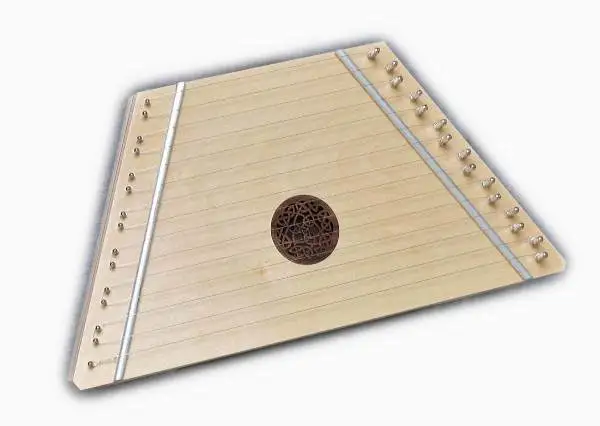
If you’ve never heard of the lap harp, let me introduce you! It’s basically a mini-harp that fits in your lap, and it’s designed with beginner musicians in mind. One of the coolest things about this stringed instrument is that you place your sheet music right underneath the strings. That means no awkward glancing up and down while you play. You’re literally looking at the notes and the strings at the same time.
And like the harmonica, the lap harp is super compact. It’s the perfect size for casual playing, whether you’re at home or on a road trip.
As for learning to play it, you won’t need years of practice. You can get the hang of it in just a few hours. The strings are all tuned to specific notes, so you’re basically plucking out a melody with minimal chance of sounding off-key.
Final Thoughts - Easy Instruments to Learn
At some point, pretty much everyone thinks about learning an instrument. The reality, though? A lot of people never follow through. Life gets busy, or they think it’s too hard, too late, or too time-consuming.
Luckily, these days, learning a musical instrument is easier than ever. With all the apps, tutorials, and resources out there, you can pretty much pick up anything you want without needing to sign up for formal lessons or spend a fortune.


